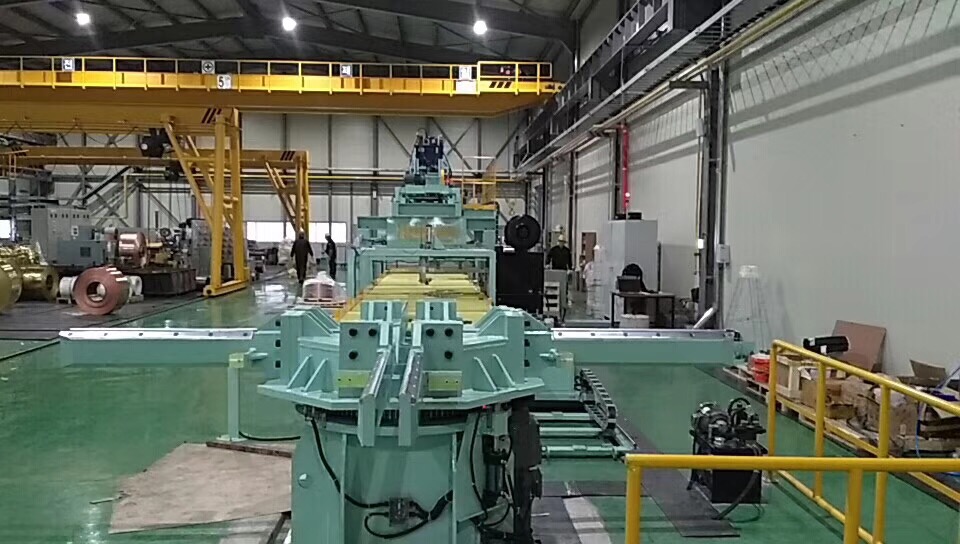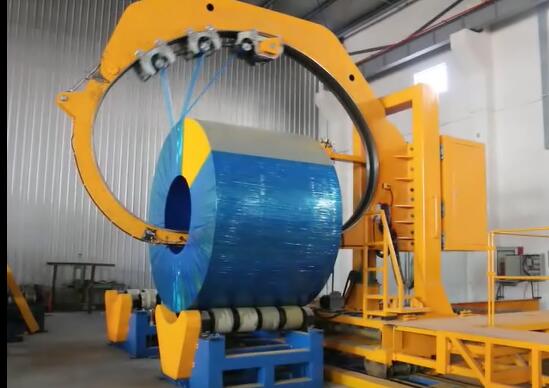The industrial world is undergoing a seismic shift. Sustainability is no longer just a buzzword but a core focus for companies across the globe. For us, this transformation began when we realized that our steel coil packing line was not only inefficient but also contributing significantly to waste and emissions—two challenges we couldn't ignore.
We knew that to stay competitive, we needed to make changes. Reducing our environmental impact while maintaining high productivity seemed like an impossible balancing act at first. But through automation, we discovered a way to achieve both. In the following account, I’ll share how we re-engineered our steel coil packing line to drastically cut waste and emissions, and how this shift impacted our entire operation.
It wasn’t a simple fix. There were setbacks, complex decisions, and unforeseen challenges along the way. But the result—a 40% reduction in packaging waste and a significant decrease in carbon emissions—was worth every step. Here’s how we did it.
When we first started exploring ways to reduce waste, the problem seemed overwhelming. Our steel coils required a significant amount of packaging material, most of which ended up as waste. Additionally, the energy consumed by the outdated equipment was contributing to our carbon footprint. We couldn’t just reduce the volume of materials or energy without compromising the quality and safety of the packed coils, so we needed a more innovative solution.
We quickly realized that automation was our key to success. But automating a process as intricate as steel coil packing required careful planning and, most importantly, customization. Generic solutions wouldn’t meet our needs, so we embarked on a journey of designing a system tailored specifically to reduce waste and emissions while maintaining the integrity of the product.
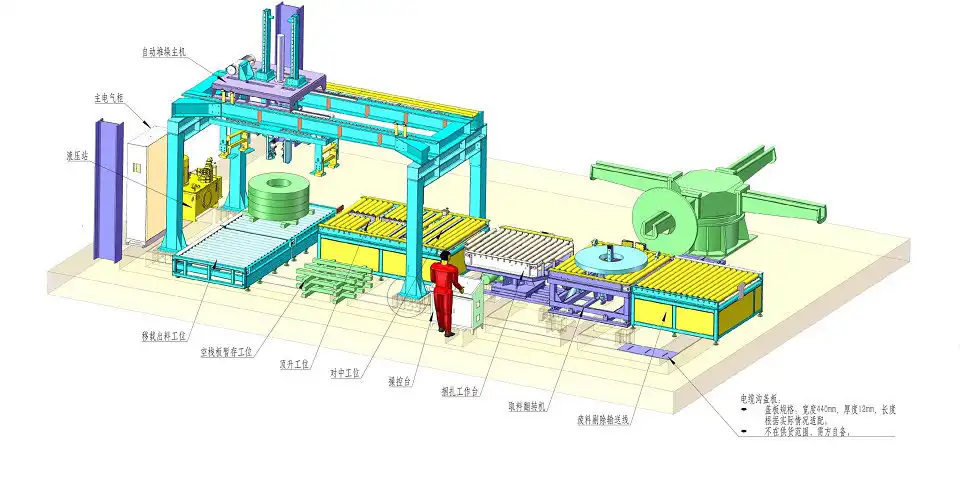
Table of Contents
- What were the major sources of waste and emissions?
- How did automation address these issues?
- What innovations made the biggest impact?
- How has this transformation reshaped our business?
1. What were the major sources of waste and emissions?
1.1 The inefficiencies of traditional packaging
Before we implemented automation, our steel coil packing line was a waste-generating machine. Every coil required layers of protective material, from plastic wrap to metal straps, to ensure it arrived at its destination undamaged. The problem was that much of this material was either excessive or incorrectly applied, leading to both material waste and the need for rework.
We found that nearly 25% of the packaging used on each coil ended up as excess waste. This wasn’t just costly—it was environmentally unsustainable. [sub-heading featured image]
1.2 The energy consumption dilemma
Our old equipment was another major contributor to emissions. It was outdated, inefficient, and consumed more energy than necessary. This wasn't just a cost issue—it was also a sustainability one. We were using more electricity than needed, and that excess energy consumption was directly contributing to our carbon emissions.
The machines lacked precision, leading to frequent stops and restarts, which further increased energy usage. Moreover, the manual interventions required meant that the line was constantly interrupted, leading to inefficiencies that compounded the problem.
1.3 Identifying the core issues to tackle
To tackle the dual challenge of waste and emissions, we needed to break the problem down into manageable parts. First, we identified that the excess packaging and the inefficiency of the wrapping process were major culprits. Second, we looked at the energy consumption of the equipment itself. By focusing on these two areas, we knew we could make the most impact.
Automation, specifically designed to handle the delicate balance between reducing material usage and maintaining coil safety, became our primary focus. But this wasn’t a simple plug-and-play solution. We had to rethink how we approached every aspect of the packing process.
2. How did automation address these issues?
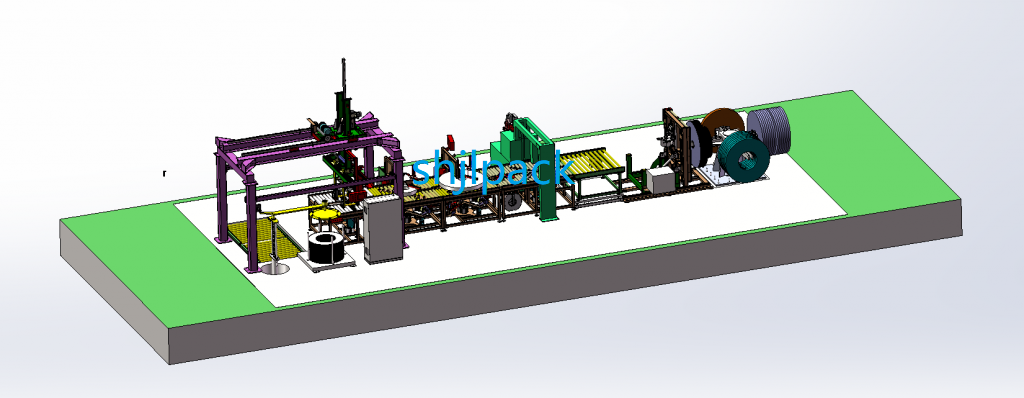
2.1 Customizing automation for sustainability
We quickly realized that off-the-shelf solutions wouldn’t cut it. So, we worked closely with automation engineers to develop a system that would not only pack the coils faster but do so with greater precision and less material. This meant designing machines that could measure each coil’s dimensions in real-time and adjust the wrapping material accordingly.
This customization allowed us to reduce the amount of plastic wrap and steel strapping by 30% without compromising on protection. The automated system could apply the exact amount of material needed for each coil, eliminating the guesswork that often led to overuse in manual processes. [sub-heading featured image]
2.2 Reducing energy consumption through smart technology
Energy consumption was another area where automation made a huge difference. With smart sensors and programmable logic controllers (PLCs), we were able to optimize the energy usage of the entire line. The system would enter a low-energy state when not in use, and the machines were designed to operate with greater efficiency during peak production times.
The new equipment used significantly less power than the older machines. By automating the process and making it more precise, we also reduced the number of times the line had to stop and restart, further cutting down on energy waste.
2.3 The material savings and environmental benefits
The material savings were immediate and impactful. By reducing the amount of packaging used for each coil, we not only cut costs but also dramatically reduced the amount of waste sent to landfills. Over a year, this amounted to a 40% reduction in packaging waste, which had a direct impact on our overall environmental footprint.
Additionally, the reduction in energy consumption lowered our greenhouse gas emissions by an estimated 20%, a significant step toward meeting our sustainability goals. This wasn’t just good for the environment—it was good for business. We were able to promote our greener, more efficient operations to customers who increasingly value sustainability in their supply chains.
3. What innovations made the biggest impact?
3.1 The role of precision wrapping
The biggest breakthrough came from the precision wrapping technology we implemented. The old system applied the same amount of material to every coil, regardless of size or weight. This led to over-wrapping smaller coils and under-wrapping larger ones, both of which caused problems.
The new system, however, uses sensors to measure each coil’s dimensions as it moves down the line. This ensures that the exact right amount of material is applied every time, reducing both waste and the need for rework due to damaged coils. [sub-heading featured image]
3.2 Optimizing the strapping process
In addition to wrapping, we also automated the strapping process. The previous method involved manual labor, with workers using metal straps to secure the coils in place. Not only was this labor-intensive, but it also led to inconsistent results—sometimes the straps were applied too tightly, damaging the coils, and other times they were too loose, allowing the coils to shift during transport.
The new automated strapping system applies just the right amount of tension to each coil, ensuring secure packaging without excess material or coil damage. This not only reduced waste but also improved the safety and reliability of our shipments.
3.3 How data analytics fueled continuous improvement
Perhaps the most overlooked, yet powerful, innovation was the integration of data analytics into our automated system. Every aspect of the packing line is now tracked and monitored in real time. This data allows us to continuously optimize the process, identifying areas where even small tweaks can lead to further reductions in waste and energy use.

For example, after analyzing the data from the first few months of operation, we realized we could make further adjustments to the wrapping process that saved an additional 5% in material. The system is constantly learning and improving, ensuring that we stay on the cutting edge of efficiency.
4. How did this shift impact our overall operations?
4.1 Redefining productivity and sustainability
The moment we fully transitioned to the new automated packing line, the impact was clear. Productivity soared. What used to be a slow, labor-intensive process became a streamlined operation with minimal manual intervention. We could pack more coils in less time, and with far fewer errors. But the real game-changer was the simultaneous reduction in waste and emissions. [sub-heading featured image]
Previously, improving productivity often meant sacrificing sustainability. If we wanted to pack coils faster, we would burn through more energy or use more materials to ensure the job was done right. But with automation, we were no longer forced into that trade-off. By optimizing the entire process, we found that higher productivity and sustainability could go hand in hand.
4.2 The financial upside of going green
At first glance, the investment in automation seemed steep. The new equipment wasn’t cheap, and there were costs associated with training our workforce to operate the system. But the financial benefits quickly outweighed the initial expense. The reduction in material waste alone saved us thousands of dollars every month. Meanwhile, the decrease in energy use not only cut our electricity bills but also positioned us to take advantage of green energy incentives and tax breaks.
Beyond the direct savings, the new system opened up opportunities with clients who prioritized sustainability. More and more, customers are looking for suppliers that share their environmental values. By reducing our emissions and waste, we were able to market ourselves as a greener choice, which helped us secure new contracts and strengthen existing relationships.
4.3 Changing the culture within our organization
Perhaps the most unexpected impact of this transition was the cultural shift within our company. The move to a more automated, sustainable packing line sent a clear message: we were committed to innovation and sustainability. This resonated with our employees, many of whom were already passionate about reducing our environmental footprint.
Automation didn’t just improve our processes—it empowered our team. With the tedious manual tasks eliminated, workers could focus on more strategic activities like process optimization and quality control. This not only improved job satisfaction but also fostered a culture of continuous improvement. Today, our employees are more engaged, more motivated, and more committed to finding new ways to reduce waste and emissions across the entire operation.
5. Why was our old system so inefficient?
5.1 Inconsistent packaging methods led to waste
Looking back, it’s almost shocking how much waste our old system generated. Because it relied heavily on manual inputs, there was no consistency in how coils were wrapped or strapped. One worker might use too much plastic wrap, while another might apply too little, leading to damage in transit and the need for rework. The lack of standardization meant that material usage was unpredictable and often excessive. [sub-heading featured image]
5.2 Energy inefficiencies were built into the system
The old equipment was, simply put, a relic. It consumed far more energy than modern machines, and because it required frequent manual adjustments, it often ran longer than necessary, burning through electricity. The lack of a smart energy management system meant that we were wasting both time and power on every shift.
5.3 The need for manual intervention slowed down the process
One of the most glaring inefficiencies was the constant need for human intervention. Workers had to manually adjust settings for each coil, stop the line for inspections, and fix errors when they occurred. Every pause added to the overall downtime, and every error increased the amount of wasted material.
6. How did automation help reduce waste and emissions?
6.1 Automation cut waste at the source
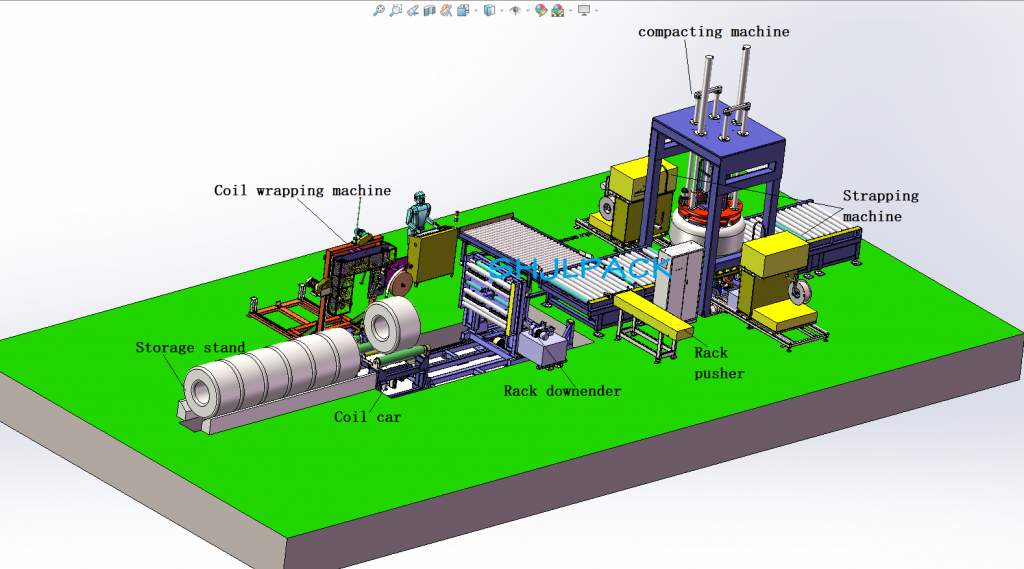
By automating the wrapping and strapping process, we were able to eliminate the human errors that had previously led to so much waste. The system’s sensors measured each coil precisely, applying the exact amount of material needed to protect the product without excess. This precision was key to reducing waste by 40%. [sub-heading featured image]
6.2 Energy use became more efficient with smart systems
The new system’s smart technology allowed us to significantly reduce our energy consumption. By automating the power management of the machines, we could ensure they were only running when necessary. This cut down on both energy waste and emissions, helping us meet our sustainability targets faster than expected.
6.3 The ripple effect on emissions
Reducing waste and energy consumption had a direct impact on our emissions. By using fewer materials and consuming less power, we were able to lower our overall carbon footprint. This was crucial not just from an environmental perspective but also from a regulatory one, as we were able to meet stricter emissions standards without sacrificing productivity.
Conclusion
The transformation of our steel coil packing line was more than just an operational upgrade—it was a complete overhaul of how we approached efficiency, waste, and sustainability. By embracing automation, we were able to reduce waste by 40%, cut energy consumption by 20%, and significantly lower our emissions. More importantly, this shift demonstrated that productivity and sustainability aren’t mutually exclusive. In fact, with the right technology, they can reinforce each other in ways we never imagined.
Our journey hasn’t ended with the packing line. The success of this project has inspired us to look at other areas of our business with fresh eyes and a renewed commitment to reducing waste and emissions. Automation was the catalyst for change, but the real driver is our determination to build a more sustainable future—one that balances growth with environmental responsibility.
